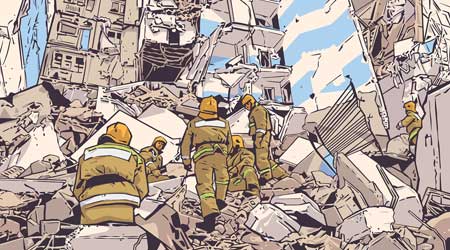Resilience Rating Systems Give Guidance
Resilience rating systems provide reliable, vetted information and allow for actionable and informed decisions about a building.
One of the most important benefits of a building rating system is the ability to enable benefit-cost and return on investment studies when evaluating retrofit and mitigation options in existing buildings.
Giving building owners, tenants, lenders, insurers, government jurisdictions, and other stakeholders reliable information on the performance of their buildings, rating systems for buildings allow for actionable and informed decisions about purchasing, leasing, refinancing, and insuring buildings, and support development of long-term strategic risk and resilience management solutions.
The U.S. Resiliency Council (USRC) was established to increase awareness of the benefits of resilient design and to develop rating systems for earthquakes and other natural hazards that credibly and consistently communicate building performance in ways that are meaningful to stakeholders across the built environment. The USRC’s Earthquake Performance Rating System was developed with the collaboration of more than 40 of the nation’s leading engineering companies and earthquake professional organizations. The USRC is developing rating systems for wind and wildfires.
U.S. Resiliency Council building ratings are issued based on a building’s ability to withstand a natural disaster, and they quantify performance along three dimensions: safety, damage, and recovery. Whereas LEED ratings are typically based on principles of good environmental stewardship, building performance ratings are based on detailed engineering evaluations of structures using national technical standards.
The USRC has rated 65 buildings to date and is on a pace to award its 100th rating by early 2021, less than six years after the introduction of its earthquake rating system.
Evan Reis is a California structural engineer and executive director of the U.S. Resiliency Council. He works with public and private organizations to promote resilience and improve the performance of the nation’s infrastructure in natural disasters.
Randy Collins is a California structural engineer and principal and founder of FTF Engineering in San Francisco.
Related Topics:














